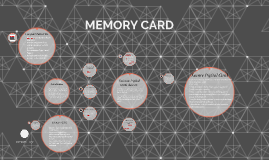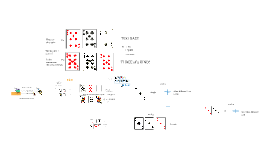Memory Card
Transcript: DueDate: October10, 2020 Memory Card Presented by : Kiech'e White Memory Card Memory Card Memory Cards allow people to easily trasnport digital photos, music, or files from mobile devices and computers or other devices. As mentioned in chapter 4, a memory cad is a removable flash memory device, usually biggger than 1.5inches in height or width, that you insert and remove from a slot in a computer, mobile device, or card reader/writer. (Gunter, Gunter, & Shelly, 2014) History/ Evolution Brief History In 1998 there was a memory stick invented it is a removable flash memory card format. In 1999 the secure digital card (SD) was made. In 2000 the USB was released and this is the most common form of a memory card. There was a mini-SD card released and after that there was a SDCXC memory card. The last type of memory card that had a huge impact was the UFS that was created by Samsung and it is used or digital cameras, mobile phones and consumer electronic devices. (Kennedy, 2020) In the 1980s Toshiba developed a NOR-Type flash memory and then in the late 1980s NAND-type flash memory was introduced in the world. In 1990 PC Cards (PCMCIA) were the first commercial memory card.In 1994, the compact Flash 1 & 2 was created and they are mainly used for portable electronic devices. In 995, Smart media card (SM?SMC) was launched as a computer floppy disk. Smart media cards are no longer manufactured. Multimedia card (MMC) was invented in 1997 and it is still widely used as a mean of internal storage in portable devices, such as android or windows phone.(Kennedy, 2020) A memory card is mainly used as a primary and portable flash memory in mobile phones, cameras and other portable and handheld devices. PC Cards (PCMCIA) were a predecessor of modern memory cards that were introduced for commercial purposes. Besides providing non-volatile media storage, a memory card also uses solid state media technology, which lowers the chances of mechanical problems, such as those found in traditional hard drives. (What is memory,2020) Purpose/ Function Most common issues: Some Files Are Missing. ... Black Screen in Camera. ... Miscellaneous Error Messages. ... SD Card Cannot Be Recognized. ... Read/write Failure. ... Unknown Files Appear in Card. ... SD Card Shows Empty Incorrectly (Zhang, 2018) Sign of Trouble/How to fix The price for a memory card truly depends on the capacity of the memory card and what type of memory card it is. Searching for deleted photos cost around $50, fixing a broken USB connecter could cost $150 or more and a chip-off recovery would cost anywhere from $300 on up. (SD Card, 2018) Cost to fix Will it be cheaper to replace that part or to replace the whole system? Software Repair $40-150 Laptop Screen Replacement $125-225+ Hard Drive Replacement $100-$225 Memory/RAM Upgrade $50-200 Liquid Damage Repair $99-250+ Power Jack Repair $100-200 Motherboard Replacement $150-300+ Keyboard Replacement $80-195 Fan Repair/Replacement $99-175 Virus Removal $49-100 SSD Upgrade $150-400+ Data Recovery $99-1000+ This is just the repairs for a computer and the different areas that may need repair. (D., 2018) In most cases it is typically cheaper to replace the memory card itself then the entire device. However, in some cases it is better to simply buy a whole new device, instead of running the risk of the memory card not being compatible. Also, there is a risk of getting a memory card that could be fake as well. References D., S. (2018, February 26). How Much Does A Computer Repair Cost? • Computer Repair Doctor. Retrieved October 10, 2020, from https://computerrepairdoctor.com/repairs/how-much-does-a-computer-repair-cost/ Gunter, G. A., Gunter, R. E., & Shelly, G. B. (2014). Chapter 4. In Teachers discovering computers: Integrating technology in a changing world (pp. 154-184). Boston, MA, MA: Cengage Learning. Kennedy, J. (2020). History and evolution of memory cards. Retrieved October 10, 2020, from https://koofr.eu/blog/posts/history-and-evolution-of-memory-cards SD Card, Memory Card Data Recovery Service – Recover Lost Photos. (2018, April 06). Retrieved October 10, 2020, from https://flashfixers.com/memory-card-recovery/ What is a Memory Card? - Definition from Techopedia. (2020). Retrieved October 10, 2020, from https://www.techopedia.com/definition/2788/memory-card Zhang, S. (2018, April 16). 7 Most Common Signs of SD Card Corruption. Retrieved October 10, 2020, from https://www.datanumen.com/blogs/7-most-common-signs-of-sd-card-corruption/

















